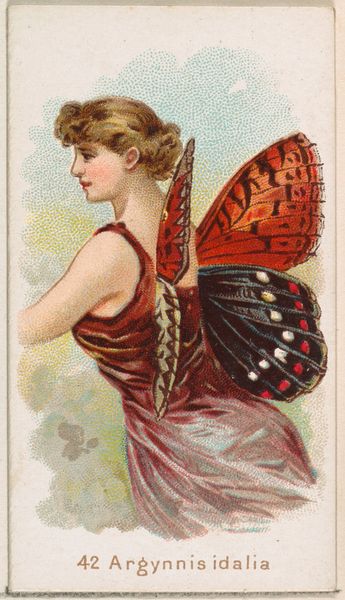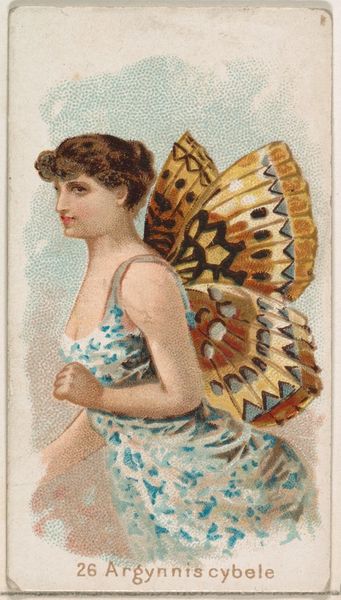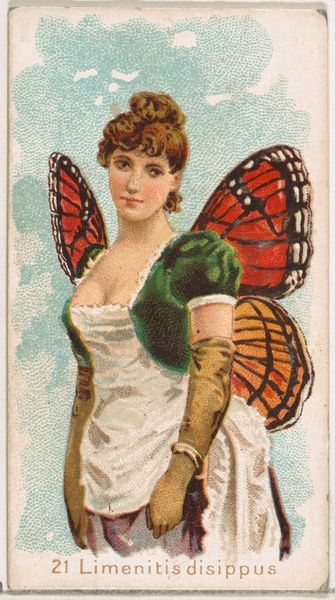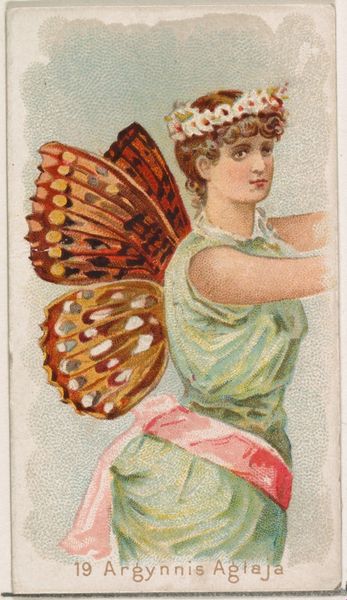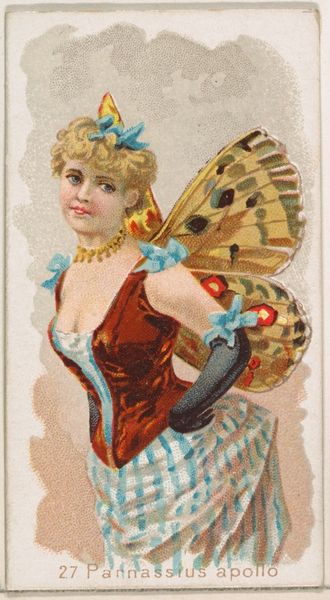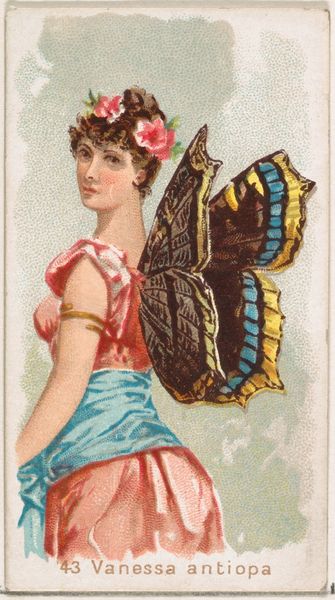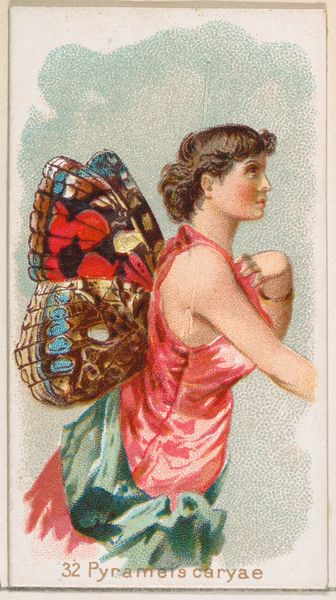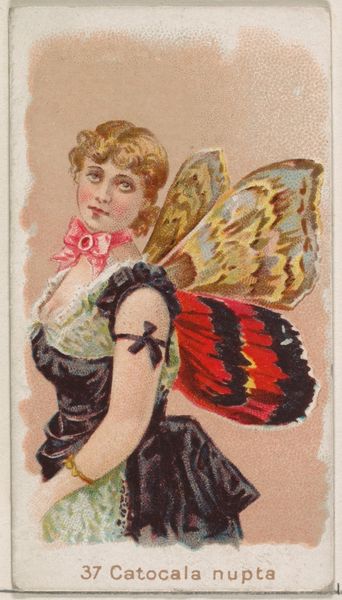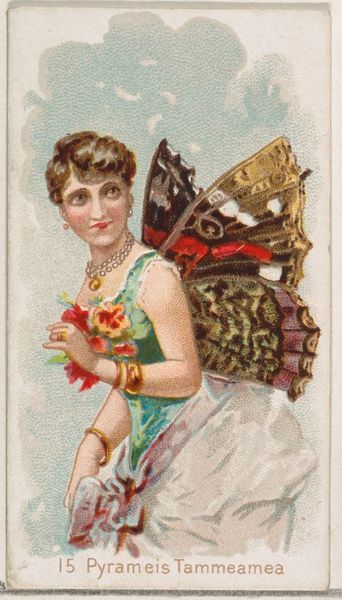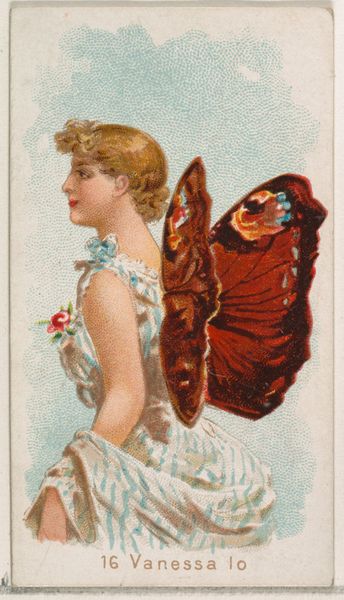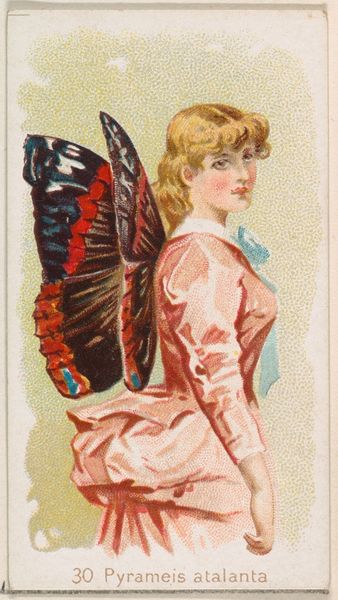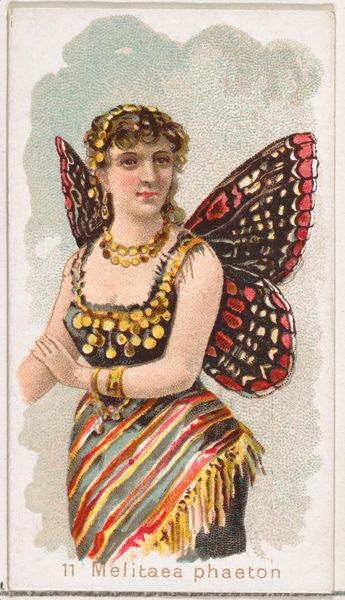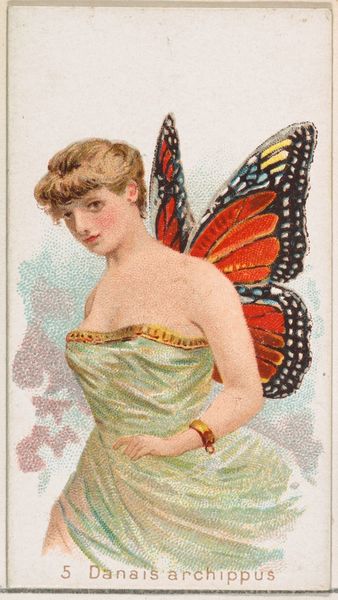
Card 9, Limenitis Arthemis, from the Butterflies series (N183) issued by Wm. S. Kimball & Co. 1888
0:00
0:00
#
portrait
# print
#
figuration
#
coloured pencil
#
watercolor
Dimensions: Sheet: 2 11/16 × 1 1/2 in. (6.9 × 3.8 cm)
Copyright: Public Domain
Curator: Here we have Card 9, Limenitis Arthemis, created in 1888 by Wm. S. Kimball & Co. It's part of the Butterflies series and it's a print using coloured pencils and watercolor. It feels very much in the Japonisme style to me, a trend that heavily influenced Western art at the time. What are your first thoughts? Editor: There's a definite fairytale-esque quality to it, wouldn't you say? The dreamy, pastel background contrasting with the very sharply delineated butterfly wings gives a rather ethereal feel. Curator: Absolutely. These cards were originally produced as part of a marketing strategy. They came in cigarette packs. Think about the socio-political implications: The commercial use of imagery, art directly linked to industry! Editor: That poses some difficult questions. What is the connection between idealized feminine beauty and the very real damages tobacco companies were inflicting at the time? Are these dreamy, sensual portraits merely marketing ploys, or is there a subtle power dynamic? Curator: Precisely! We see this blending of romantic portraiture, even flirting with Japonisme, being completely driven by a new consumer culture. Editor: Thinking of its aesthetic connections to Japonisme, the focus on detailed natural elements, the flattened perspective. I wonder if we can draw parallels between that flattening and the flattening or objectification of women? It feels especially potent since these were in cigarette packs which would largely be aimed toward men. Curator: Very insightful. The mass production, its role within capitalist structures… It raises important questions about the commercialization of art and its use to perpetuate societal norms and power structures. Even if we are charmed, can we interrogate these complex layers. Editor: It calls for a critical re-evaluation, urging us to question the underlying values of the culture from which it came. Thank you for walking me through that. Curator: It has been my pleasure. Thanks for contextualizing.
Comments
No comments
Be the first to comment and join the conversation on the ultimate creative platform.
